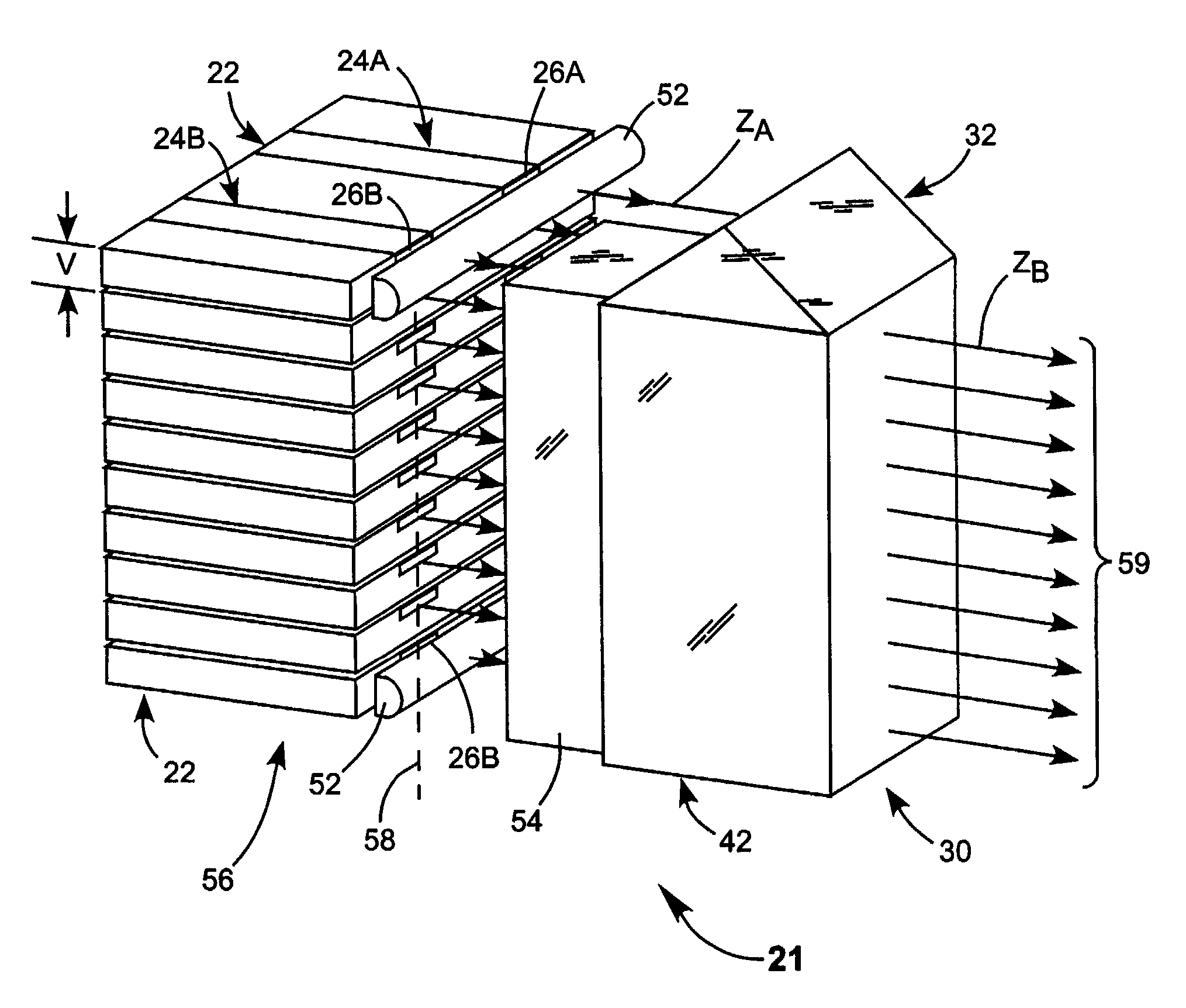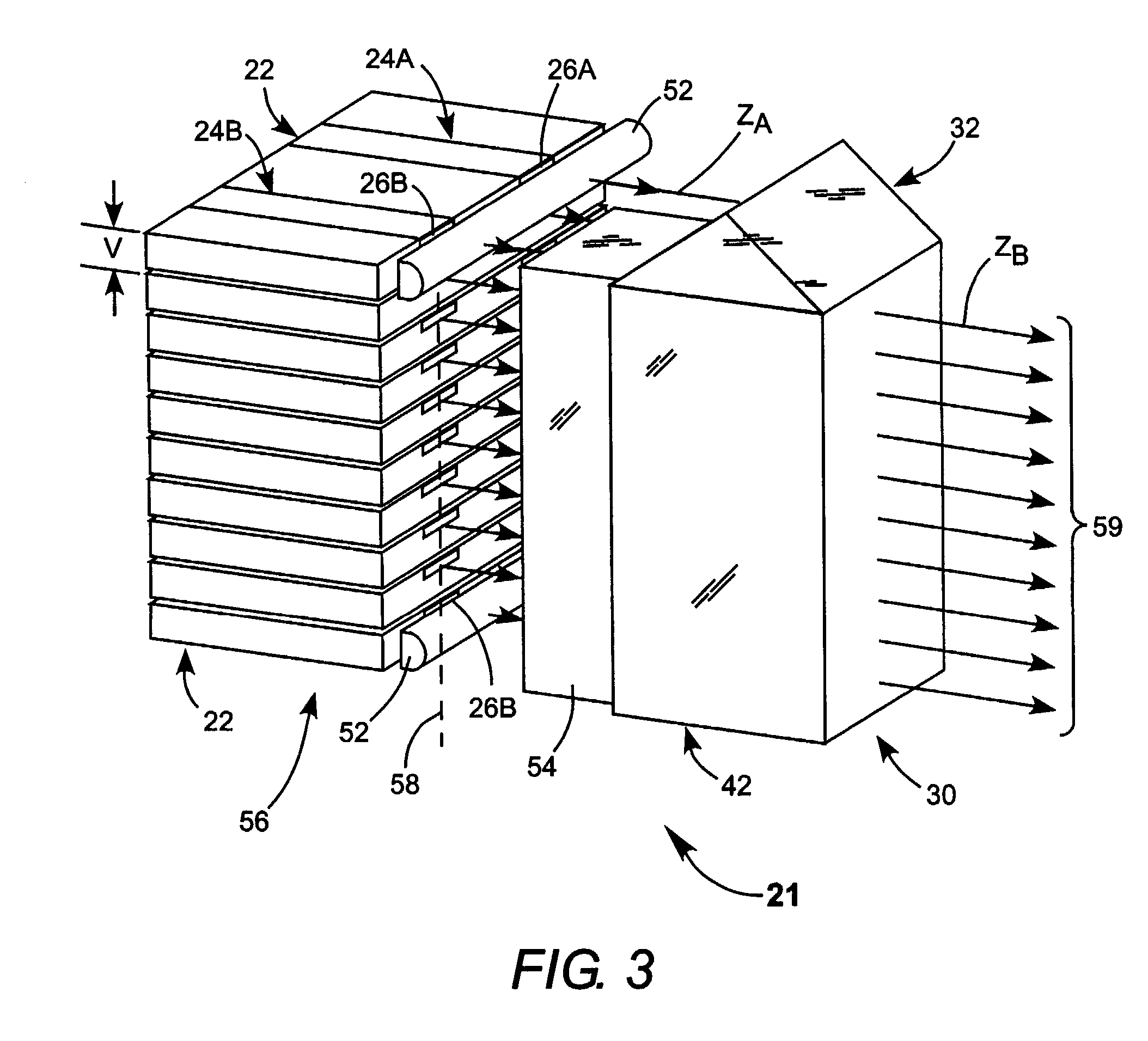Method and apparatus for coupling radiation from a stack of diode-laser bars into a single-core optical fiber
- Summary
- Abstract
- Description
- Claims
- Application Information
AI Technical Summary
Benefits of technology
Problems solved by technology
Method used
Image
Examples
Embodiment Construction
[0027]Turning now to the drawings, wherein like features are designated by like reference numerals, FIG. 1 schematically illustrates a preferred embodiment 20 of beam combining apparatus in accordance with the present invention. Apparatus 22 includes a diode-laser bar or array having two emitters 24A and 24B. Referring additionally to FIG. 2, emitters 24A and 24B emit laser-radiation from emitting-apertures 26A and 24B respectively, each having a height H, and a with D. The emitters have a length L about equal the width of diode-laser bar 22. Emitters 24A and 24B are spaced apart center-to-center by a distance S. Height H is typically on the order of about 1.0 micrometers (μm). Width D is preferably between about 50 and 1000 μm. Emitters having a width in this range are often referred to by practitioners of the art as broad-area emitters, or broad-aperture emitters. Such emitters can deliver up to about 20 Watts (W) of power per emitter.
[0028]Each emitter 24 emits laser-radiation in...
PUM
 Login to View More
Login to View More Abstract
Description
Claims
Application Information
 Login to View More
Login to View More - R&D
- Intellectual Property
- Life Sciences
- Materials
- Tech Scout
- Unparalleled Data Quality
- Higher Quality Content
- 60% Fewer Hallucinations
Browse by: Latest US Patents, China's latest patents, Technical Efficacy Thesaurus, Application Domain, Technology Topic, Popular Technical Reports.
© 2025 PatSnap. All rights reserved.Legal|Privacy policy|Modern Slavery Act Transparency Statement|Sitemap|About US| Contact US: help@patsnap.com



